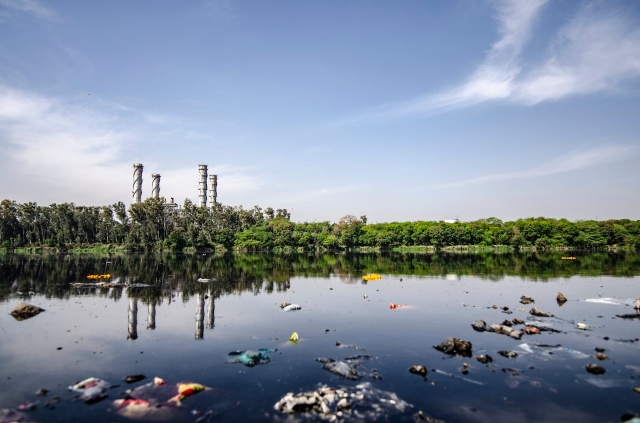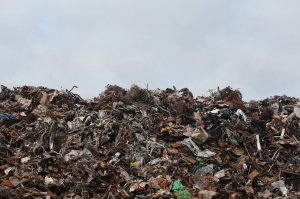Waste management is a crucial aspect of maintaining a clean and sustainable environment. As the world grapples with increasing waste production, advanced solutions are emerging to transform how we manage waste.
These innovations are not only improving efficiency but also reducing the environmental impact of waste. This article explores several advanced waste management solutions and their benefits.
1. Smart Waste Bins
Smart waste bins are revolutionizing waste collection by integrating technology into everyday waste management. These bins are equipped with sensors that monitor the level of waste inside them. When the bin is nearly full, it sends a notification to waste management services, ensuring timely collection. This technology helps prevent overflowing bins and reduces unnecessary collection trips, saving time and fuel.
Smart waste bins also provide valuable data that can be analyzed to optimize waste collection routes and schedules. By understanding waste generation patterns, municipalities can allocate resources more efficiently, reducing operational costs. Cities like San Francisco and Copenhagen have already implemented smart waste bins, resulting in cleaner streets and more efficient waste management systems. These bins are a prime example of how technology can enhance public services and environmental sustainability.
2. Stormwater Pollution Prevention
Managing stormwater is a critical component of effective waste management, especially in urban areas. Stormwater can carry pollutants from streets and industrial sites into water bodies, causing significant environmental harm. Implementing a stormwater pollution prevention plan (SWPPP) is essential to mitigate this issue.
Advanced solutions in stormwater management include green infrastructure, such as permeable pavements, green roofs, and rain gardens, which absorb and filter stormwater. Moreover, smart stormwater management systems use sensors and IoT technology to monitor water quality and flow in real time. These systems can detect pollutants early and trigger automated responses to prevent contamination.
The benefits of these advanced stormwater management solutions are clear. They help reduce pollution, protect water quality, and enhance the resilience of urban infrastructure. Cities implementing SWPPPs are better equipped to handle heavy rainfall events and reduce the environmental impact of urban runoff.
3. Recycling Technologies
Recycling has always been a cornerstone of waste management, but recent advancements are taking it to the next level. New recycling technologies are making it easier to sort and process materials, increasing recycling rates and reducing the burden on landfills. Automated sorting systems, for instance, use AI and robotics to separate recyclables with greater accuracy and speed than manual sorting.
Advanced material recovery facilities (MRFs) are also emerging, equipped with sophisticated machinery that can handle a wide variety of recyclables. These facilities can process mixed waste streams, extracting valuable materials that would otherwise end up in landfills. Technologies like chemical recycling are breaking down plastics into their basic components, allowing them to be reused in new products.
These innovations in recycling technology are crucial for creating a more sustainable waste management system. By increasing the efficiency and effectiveness of recycling processes, we can reduce waste, conserve resources, and minimize the environmental impact of waste disposal.
4. Waste-to-Energy Technologies
Waste-to-energy (WTE) technologies are turning waste into a valuable resource by converting it into energy. These technologies can significantly reduce the volume of waste sent to landfills while generating renewable energy. There are several types of waste-to-energy processes, including incineration, gasification, and anaerobic digestion.
Incineration involves burning waste at high temperatures to produce steam, which can then be used to generate electricity. Gasification converts waste into synthetic gas (syngas), which can be used as a fuel for power generation. Anaerobic digestion breaks down organic waste when oxygen is not present, making biogas that can be consumed for heating or electricity generation.
The benefits of waste-to-energy technologies are manifold. They help reduce the volume of waste, generate renewable energy, and decrease greenhouse gas emissions. Countries like Sweden and Japan have successfully integrated WTE technologies into their waste management systems, showcasing their potential for widespread adoption.
5. Biodegradable and Compostable Materials
The development and use of biodegradable and compostable materials are making a significant impact on waste management. These materials break down more easily in the environment compared to traditional plastics, reducing the burden on landfills and decreasing plastic pollution. Biodegradable materials are designed to decompose naturally through the action of microorganisms, while compostable materials break down into nutrient-rich compost under specific conditions.
Advancements in this field are leading to the creation of new types of biodegradable plastics made from renewable resources like cornstarch and sugarcane. Compostable packaging is becoming increasingly popular in the food industry, providing an eco-friendly alternative to conventional plastic packaging.
The use of biodegradable and compostable materials helps close the loop in waste management by returning valuable nutrients to the soil and reducing the environmental impact of waste. By embracing these materials, businesses and consumers can contribute to a more sustainable and circular economy.
6. Data Analytics and AI
Data analytics and artificial intelligence (AI) are revolutionizing waste management by providing deep insights into waste generation and disposal patterns. These technologies enable waste management companies and municipalities to make data-driven decisions, optimizing operations and reducing costs.
For example, AI can analyze data from smart waste bins and other sources to predict waste generation trends. This allows for better planning of collection routes and schedules, ensuring that resources are used efficiently. Data analytics can also identify areas with high levels of contamination in recycling streams, helping to target education and enforcement efforts more effectively.
By leveraging data analytics and AI, waste management systems can become more responsive and adaptive, leading to improved efficiency and reduced environmental impact. The integration of these technologies ensures that waste management strategies are continuously refined based on real-time data and predictive insights.
To Sum It Up
Advanced solutions are transforming waste management, offering innovative ways to address the growing waste problem.
From smart waste bins and stormwater pollution prevention to cutting-edge recycling technologies and waste-to-energy processes, these advancements are making waste management more efficient and sustainable. Embracing these solutions is essential for creating a cleaner and more resilient future.






